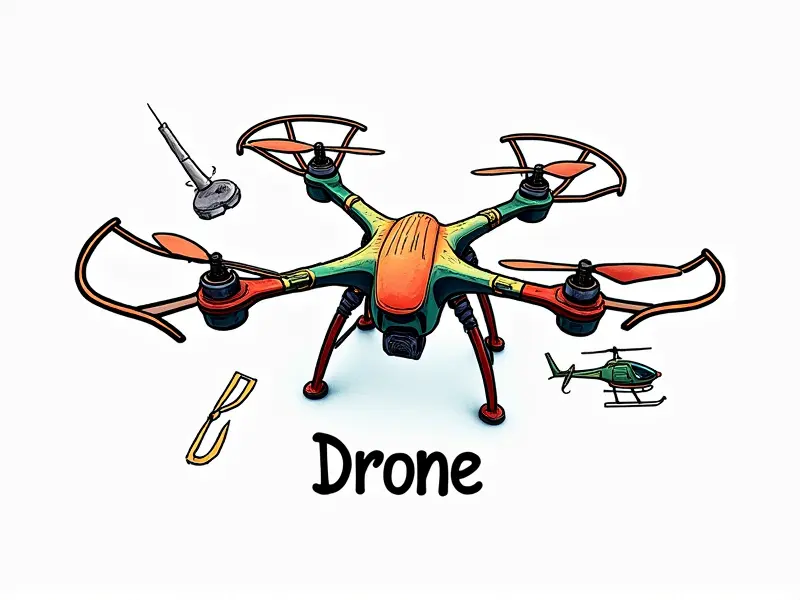Are drones waterproof?

Can Drones Handle Rain?
Drones have become an indispensable tool for various applications, from aerial photography to industrial inspections. However, one common concern among drone enthusiasts and professionals is whether these devices can withstand the elements, particularly rain. This article delves into the waterproof capabilities of drones across different types and models.
Are RC Quadcopters Water Resistant?
RC quadcopters are popular for their versatility and ease of use. Many manufacturers design them with water-resistant features to protect internal components from moisture. However, it's important to note that "waterproof" does not mean the same as "weatherproof." While some models can handle light rain or brief splashes, prolonged exposure to heavy rainfall may still cause damage.
Waterproof Capabilities of Drones
The waterproof rating of a drone is typically indicated by an IP (Ingress Protection) code. For instance, a higher IPX7 rating means the drone can withstand immersion in water up to 1 meter deep for 30 minutes without damage. However, not all drones come with this level of protection; many are only designed to be splash-proof or dust-resistant.
Drone Durability in Wet Conditions
The durability of a drone in wet conditions depends on several factors including the materials used for construction and the quality of seals around motors, propellers, and other critical components. High-quality drones often feature reinforced casings and advanced sealing techniques to ensure they can operate effectively even when exposed to moisture.
Materials Used
- Polymer Composites: These materials are lightweight yet durable, providing excellent protection against water ingress.
- Metallic Frames: Some high-end drones use aluminum or magnesium frames for added durability and resistance to corrosion.
FPV Racing Drones and Water
First-person view (FPV) racing drones are built for speed and agility, often sacrificing some level of water protection in favor of performance. While many FPV racers can handle light rain, they may not fare well under heavy downpours or prolonged exposure to moisture.
Waterproofing Techniques
- Sealed Motors: Ensuring motors are fully sealed is crucial for preventing water damage in FPV racing drones.
- Water-Resistant Batteries: Using batteries with waterproof coatings can help protect against moisture ingress.
Helicopter Drones in the Rain
Helicopter drones, also known as multirotor or octocopter models, face similar challenges to quadcopters when it comes to water resistance. However, their design often includes more complex mechanical components that require additional protection against moisture.
Sealing Mechanisms
- Gaskets and O-rings: These are essential for maintaining a watertight seal around critical parts of the drone.
- Polyurethane Coatings: Applying protective coatings can enhance water resistance without compromising performance.
Airplane Drones: Weatherproof?
Airplane drones, or fixed-wing models, are typically designed for longer flight durations and higher speeds. While they may be more aerodynamic than multirotor drones, their weatherproofing capabilities vary widely depending on the specific model.
Design Considerations
- Aerodynamic Shaping: The streamlined design of airplane drones helps them cut through rain and wind with minimal resistance.
- Weatherproof Enclosures: Ensuring that all electronic components are housed in waterproof enclosures is crucial for maintaining functionality during wet conditions.
Can RC Helicopters Handle Water?
RC helicopters, like other multirotor drones, can handle light rain but may struggle with heavy precipitation. Their design often includes exposed rotors and complex mechanical systems that require careful sealing to prevent water damage.
Maintenance Tips
- Regular Cleaning: Keeping the drone clean and dry after each use helps prevent corrosion and prolongs its lifespan.
- Lubrication: Applying appropriate lubricants to moving parts can enhance durability in wet conditions.
RC Airplanes and Water Resistance
RC airplanes are generally more robust against water due to their enclosed design. However, even these models require proper sealing around critical components such as the battery compartment and control systems.
Testing Procedures
- Dunk Test: Submerging the drone in a controlled environment can help assess its waterproof capabilities.
- Rain Simulation: Using rain simulators to test how well the drone performs under simulated wet conditions.
Is Your Drone Safe in Water?
Determining whether your specific drone model is safe for use in water involves checking its manufacturer specifications and conducting thorough tests. Always refer to user manuals or contact customer support if you're unsure about the waterproof capabilities of your device.
User Manuals
- Read Documentation: User manuals often provide detailed information on environmental resistance ratings and recommended usage conditions.
- Contact Support: Reaching out to customer service can offer personalized advice based on your specific model.
Testing Drones' Water Resistance Limits
To fully understand the limits of a drone's water resistance, it’s essential to conduct controlled tests. This includes both laboratory testing and real-world scenarios to evaluate how well the device performs under various wet conditions.
Laboratory Testing
- IP Rating Tests: Conducting IP rating tests in a lab setting ensures accurate assessment of waterproof capabilities.
- Mechanical Stress Analysis: Evaluating the drone's ability to withstand mechanical stress caused by water exposure.
Real-World Testing
- In-Field Trials: Testing drones in real-world conditions provides practical insights into their performance and durability.
- User Feedback: Gathering feedback from users who have operated the drone in wet environments can offer valuable perspectives on its reliability.
Conclusion
While many modern drones are designed with some level of water resistance, it's crucial to understand their specific limitations and capabilities. Whether you're using a quadcopter for aerial photography or an FPV racing drone for high-speed flights, ensuring your device is properly protected against moisture can significantly extend its lifespan and performance.

